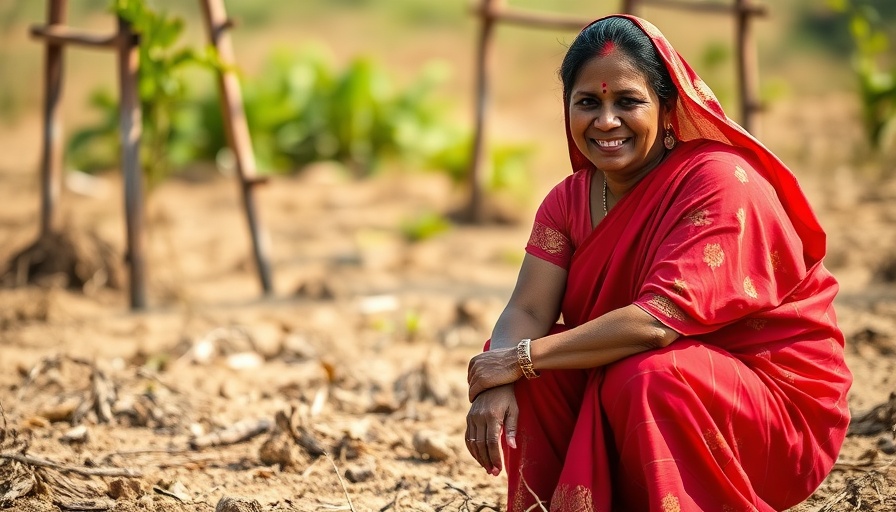
Modi's Grand Scheme: A Promise Unfulfilled
When Prime Minister Narendra Modi launched the Jal Jeevan Mission (JJM) in 2019, it was seen as a bold step towards alleviating water scarcity in rural India. The ambitious plan aimed to provide tap water to over 193 million rural homes by 2024, a feat meant to ensure that every Indian had access to clean drinking water.
However, reports from the ground reveal a disconnect between policy and reality. Despite optimistic government claims that 81% of the targets have been met, many villagers like Anita Devi from Lat in Jharkhand find themselves still waiting for running water. With broken infrastructure and dry taps prevalent, it raises serious concerns about the efficacy of such a critical initiative.
The Reality on the Ground: The Human Impact of Water Scarcity
In villages across India, the struggles faced by residents resonate deeply. In Lat, where workers arrived to install water taps, excitement turned to disappointment as the taps remained dry. Every day, villagers continue to trek long distances to fetch water, underscoring the urgency of solving water insecurity in rural settings.
This situation highlights a troubling pattern: despite government reports touting success, on-the-ground observations tell a different story. Communities are left grappling with the implications of inadequate water access—impacts that ripple through health, education, and economic opportunities.
Social Connections: Why Water Access Matters
Access to clean water is not merely a convenience; it’s a vital resource that affects every aspect of rural life. From health issues related to waterborne diseases to impacts on children's education—filling the family’s water needs often falls disproportionately on women and children, who sacrifice education and well-being for the daily chore of fetching water.
Moreover, without reliable water sources, communities struggle to implement sustainable agricultural practices. A robust water supply is crucial for growing crops and fostering local economies. Without it, farmers cannot optimize resources or innovate, ultimately leading to broader societal issues.
Exploring Future Trends in Water Management
The challenges posed by the JJM (Jal Jeevan Mission) are indicative of broader trends in global water management. Global experiences reveal that successful water management strategies involve community participation and sustainable practices. As nations grapple with climate variability, understanding the link between water conservation and climate resilience becomes paramount.
Looking ahead, India must consider integrating innovative technologies such as rainwater harvesting and decentralized filtration systems, allowing communities to take ownership of their water resources. These solutions align with the broader goals of sustainability and indicate a potential roadmap for overcoming current shortcomings.
Counterarguments: The Debate Surrounding Government Claims
While the Modi government touts the JJM as a pioneering success in addressing rural water scarcity, critics argue that the achievements are overstated. Reports of corruption, inadequate maintenance, and a lack of community involvement challenge the narrative that the JJM has been wholly successful.
This discord begs the question: how can future initiatives genuinely bridge the gap between government goals and the lived realities of rural households? The depth of public dissatisfaction is emerging not just as a challenge to the current administration but as a significant issue of governance.
Taking Action: What Can Be Done?
For citizens and investors alike, understanding the implications of water scarcity is vital. Engaging with organizations focused on sustainable water management can provide actionable insights and frameworks.
By advocating for responsible water use, investing in sustainable products, and participating in community-based initiatives, individuals can contribute to meaningful change that resonates beyond individual actions. The need for clean energy solutions and sustainable development practices is imperative to enhance community resilience and ensure environmental conservation for future generations.
Conclusion: Reflecting on the Call to Action
The situation surrounding India’s Jal Jeevan Mission serves as a critical reminder of the complexities involved in addressing essential human needs. The time for effective solutions is now. By engaging in discussions, supporting sustainable initiatives, and holding governments accountable, we can work towards creating a water-secure future.
For those looking to make a difference, now is the time to take action on environmental conservation efforts.
 Add Row
Add Row  Add
Add 



Write A Comment